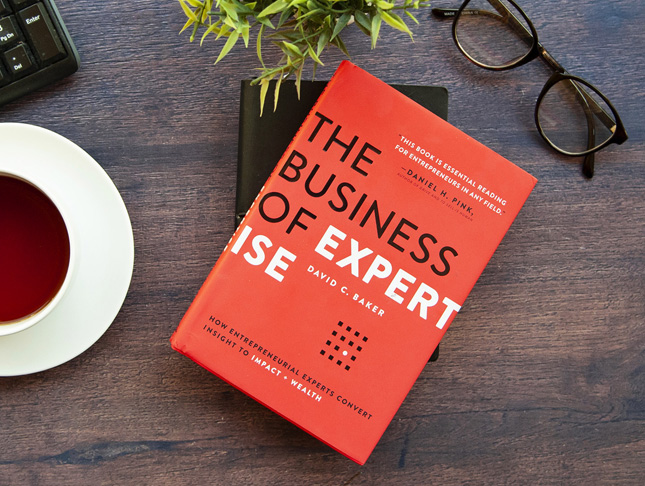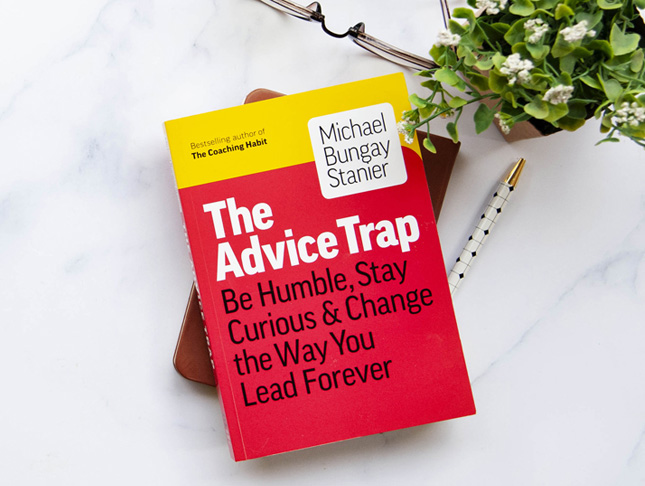How to apply the principles of IBM Enterprise Design Thinking to your next project

Last modified
What is design thinking?
Design thinking is a human-centered, iterative approach to problem solving. Instead of defining a project by its structural components or technological requirements, design thinking focuses on how an idea might help an end user achieve specific goals.
By way of example, a traditional design project might involve “designing a vase”. Design thinking, on the other hand, would prompt creators to “design a better way for people to enjoy flowers in their home”. The former limits creative thinking by focusing on a predefined solution model. The latter gives rise to lateral thinking opportunities by focusing on end user needs.
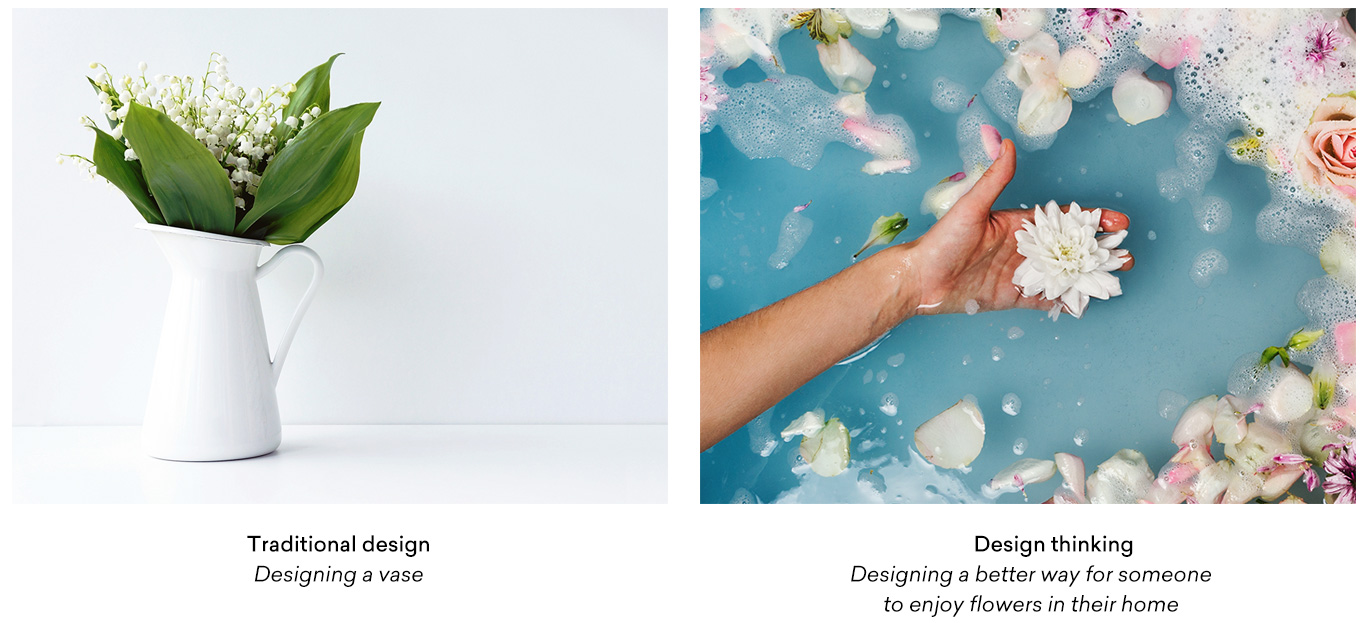
Design thinking is not just for designers. It can be applied to the development of software, technology products, medical services, business consulting, consumer experiences and much more. Here are a few real-world examples:
- Airbnb used principles of design thinking to scale up from a failing startup to a billion dollar business
- UberEATS applies a design thinking mindset when improving food delivery workflows
- Clean Team applied design thinking to provide comprehensive sanitation systems to Ghana’s urban poor
- The Hasso Plattner Institute of Design at Stanford used design thinking to explore new ways to improve patient experiences in emergency rooms
Models of design thinking
Many models of design thinking have been developed to date. Examples are:
- Stanford d.School design thinking process
- Google Design Sprints
- Design Council UK Double Diamon model
- IDEO design thinking program
Most models follow a specific process that starts with building empathy through user research, moving onto problem definition, ideation, prototyping and testing.
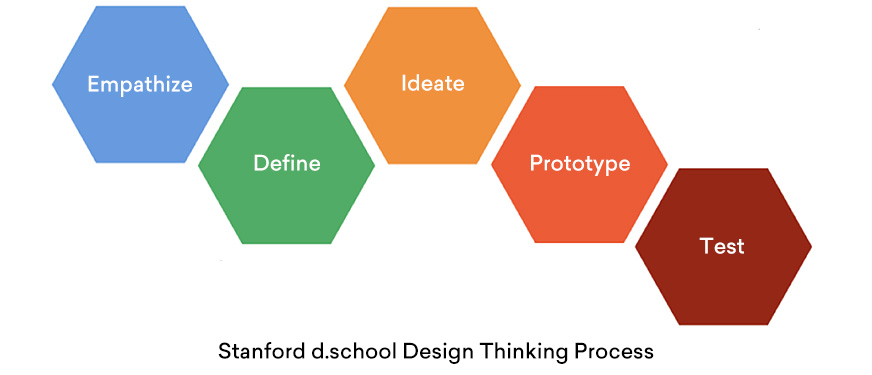
Putting the “enterprise” in enterprise design thinking
IBM’s Enterprise Design Thinking framework was conceived specifically to cater for the scale and ambiguity that enterprise-level projects bring. The framework helps diverse, dispersed teams collaborate on complex projects in a manner that focuses on user outcomes.
Like other design thinking methodologies listed above, this is an iterative process that involves understanding, exploring, prototyping and validating ideas with users. According to research by Forrester, teams that apply Enterprise Design Thinking are 75% more efficient and can deliver products to market almost twice as fast.
The Principles
The IBM model of Enterprise Design Thinking is focused on three major principles:

Here is a quick overview on each principle:
1. A focus on user outcomes
Enterprise Design Thinking puts users’ needs first. This involves developing user personas that define who the users are, what problems they face and how their experiences may be improved.
When we shift the conversation from one about features and functions to one about users and user outcomes, we deliver more useful, usable, and desirable solutions.”
- IBM Enterprise Design Thinking
Business problems (such as those focused on revenue, brand recognition or customer retention) need to be redefined with a focus on the user problems that underlie those business considerations. To do this, Sakichi Toyoda’s 5 Whys exercise is recommended as an iterative process to get to the root cause of a problem. This involves asking “why” roughly 5 times. Buffer shares the following application example:
| What is the business problem? | The system goes down occasionally. |
| Why might that be? | Because the database becomes locked. |
| Why? | Because there are too many database locks. |
| Why? | Because this is not foreseen and it is not load tested. |
| Why? | Because we don’t have a development process set up for when we should load test changes. |
| Why? | Our system engineers have never done much load testing and we are hitting new levels of scale. |
The final statement comes closer to the root cause of the problem and focuses on a specific user – system engineers and the need to level up skill sets when it comes to working in high scale environments. This can now be redefined as a user-focused problem statement for further exploration.
A typical user-focused problem statement will follow this formula:

2. Restless reinvention
Restless reinvention involves rapid prototyping to validate ideas and break out of the status quo. This means shipping products to users more quickly, listening to their feedback, learning and course-correcting.
If you start looking at everything you make as a work in progress, you can begin to shift your mindset from waiting until something is perfect to waiting until it’s ready."
- IBM Enterprise Design Thinking
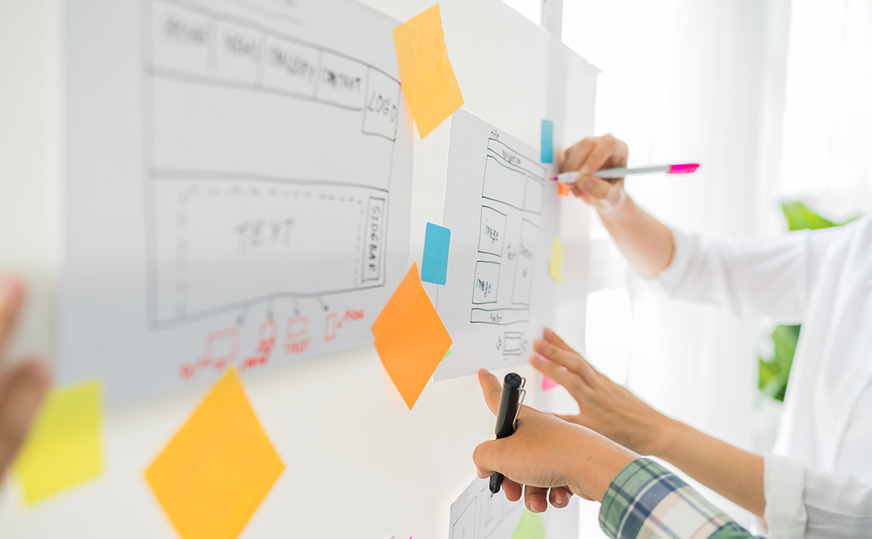
To test and validate ideas they need to be made visual. This may involve low fidelity prototypes (such sketches on napkins, wireframes or static designs) or high fidelity prototypes (involving slick presentations or functional apps) – the most important requirement is that users be able to understand the idea and provide feedback.
Ideating
Ideating is an important component of the innovation process and involves coming up with many possible solutions to a problem before settling on a chosen course. A typical ideation session will follow these steps:
- Thinking about the user problem and writing down the first few solutions that come to mind. These will typically be the most obvious directions.
- Stretching your thinking and seeing if you can come up with more interesting, out-of-the-box solutions to the problem. The focus is on quantity over quality of ideas at this stage.
- Leaning into the absurd to accelerate brainstorming. This involves looking at the problem from a completely different angle – how might this problem be solved “on the moon”? How might this problem be solved “without modern technology” or “in the year 2600”?
If at first the idea is not absurd, then there is no hope for it.”
- Albert Einstein
According to Dev Patnaik’s Idea Curve, ideation, done well, often oscillates between the absurd and the brilliant. The more absurd an idea is, the more likely it will ricochet back to a brilliant one which solves problems in new and competitive ways:
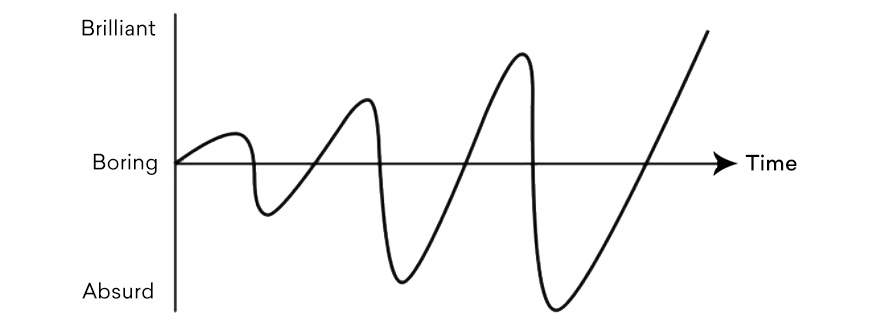
Tip: When ideating gets stale, try silly and unusual prompts to kickstart further brainstorming.
3. Diverse empowered teams
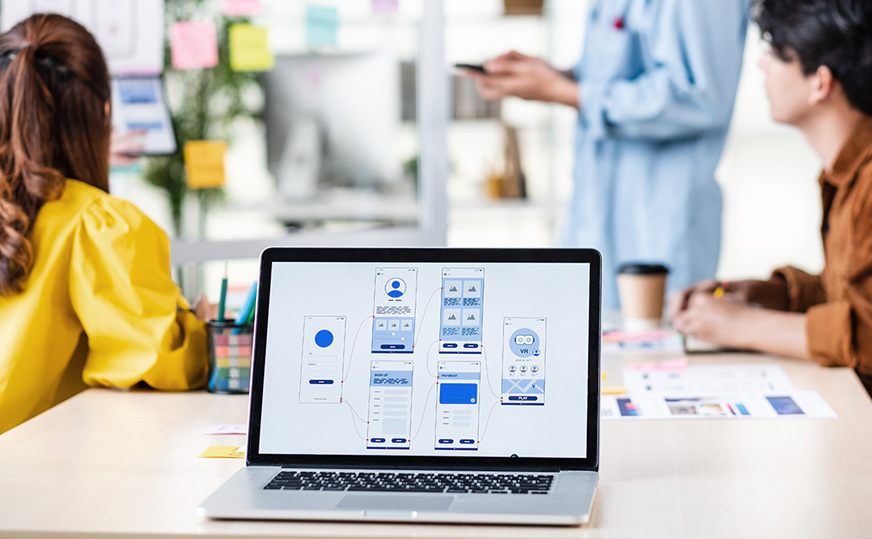
The more diversity you can tap into when solving a problem, the more likely you will find a breakthrough solution. All the practices involved in design thinking – such as design research, user observation, brainstorming and ideating – are amplified when working with diverse teams that bring varied skills, perspectives and backgrounds to the project.
Diverse teams can build on each other’s ideas, enrich each other’s knowledge, and challenge each other’s assumptions in ways that accelerate the work.”
- IBM Enterprise Design Thinking
Diverse teams work best by diverging and then converging ideas:
- Start by diverging: Each team member comes up with ideas individually, pushing past the obvious to generate creative solutions. These ideas can be captured via colour-coded sticky notes, for example.
- Converge: Ideas are then shared and visually clustered by looking for similar patterns. The team builds on these patterns to achieve alignment on the way forward.
The Loop
The IBM Loop is a visualization of the firm’s approach to design thinking. It represents a continuous cycle of observation, reflection and creation.

The loop is how you work. It’s how you move from learning about people, to creating outcomes that improve their lives. It’s how you make sense of ambiguity within complex domains. “
- IBM Enterprise DesignThinking
- Observing is about immersing yourself in the real world of your users via design research. This may involve user testing, user interviews and online research.
- Reflecting is about sharing “aha” moments as a team, synthesizing learnings and deciding on the next steps.
- Making is about giving concrete form to abstract ideas and validating these ideas with users. The faster you can get your ideas in front of actual users in the form of low-or high-fidelity prototypes, the faster you can innovate.
The process of learning through the Loop allows a team to “fail” early and quickly, mitigating risk through incremental changes. These series of small “failures” eventually lead to robust, battle-tested innovations.
If you're not failing, you're probably not really moving forward."
- John C Maxwell
The Keys
The Keys are IBM’s scalable practices for enterprise team alignment.

Hills
Briefly, Hills are human-focused mission statements that describe a future enablement for a specific user – in other words, something a specific user is enabled to do. They follow a format of Who, What, and Wow:
- Who: Who is your user?
- What: What will your user be able to do that they could not do before? This statement should be solutions-agnostic – it should not focus on feature or implementation details.
- Wow: What differentiates you from the competition? And how will you measure success?
Here is an example Hill provided by IBM:

Tip: To retain focus, a project should typically involve no more than three Hills.
Playbacks
We retain information told in story format far better than facts and figures. Playbacks use memorable, human-centered stories to share work-in-progress to keep team members and stakeholders aligned throughout a project. This may be in the form of simple visual aids (such diagrams and sticky notes with user quotes) or polished presentations (including videos on user prototype interaction). Feedback from Playbacks is then used to inform subsequent Loops and measure progress against Hills.
Tip: Schedule playbacks at critical project milestones e.g. at the end of each major sprint.
Sponsor Users
Sponsor Users are real-world users (such as external clients, future clients or end users) that contribute domain expertise to a project, allowing you to validate your assumptions and break empathy barriers.
A typical project may involve speaking to Sponsor Users twice a month for an hour, over a period of 6 to 9 months, as the project evolves. The goal is to better understand the user’s workflow, their day-to-day tasks, their frustrations and needs – in addition to validating project progress. Sponsor Users may even attend brainstorming sessions and Playbacks.
Tip: Each project should recruit at least one Sponsor User per Hill.
Applying the principles of enterprise design thinking to your project
The exact steps and tools you will apply will vary for each and every project based on its scale, complexity and geographic reach. The underlying processes, however, will remain deeply rooted in user-centered problem definition, brainstorming, validation and iteration:
- Start by defining the problem as a user-centered statement.
- Involve diverse teams in brainstorming and ideation.
- Validate ideas with your users and measure progress by how well your product fulfills their needs.
- Treat everything as a prototype and keep iterating.
- Remember to focus on serving user needs rather than on building products or features.
Further resources
- Take IBM's enterprise design thinking course
- Watch The Loop, a documentary on enterprise design thinking by Invision
- Read IBM's Project Monocle case study

